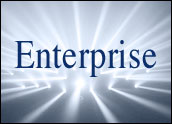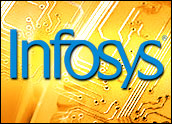
The Enterprise 2.0 Global Delivery Model Transformation, Part 1
There are six global delivery model parameters that will undergo change in order to support Enterprise 2.0: processes; technology; infrastructure; resources; communication channels; and business models.
We’ll discuss processes, technology and infrastructure in this second installment of our three-part series.
1. GDM Processes
Processes are the lifeblood of the global delivery model and the links that strongly hold together various entities to make the GDM work. Enterprise-level IT implementations owe their success largely to efficient, standardized processes, which are in turn constantly fine-tuned using well accepted quality frameworks such as the Six Sigma and SEI CMM Levels. Some of the key characteristics of processes in a typical Enterprise 1.0:
- Process definition, implementation and changes are undertaken in a centralized manner, typically driven by a program management team.
- There are comprehensive, time-tested mechanisms to implement processes and track process adherence.
- From a stakeholder point of view, the scope of applicability of processes remains fairly constant due to limited number of parties involved (client and a handful vendors).
- Processes have attained significant levels of maturity, requiring very few changes and hence rendering process artifacts fairly static.
The key challenge for an E2.0 will arise from the fact that all the GDM parameters will experience a change. There will be multiple vendors across multiple geographic locations with diverse, dynamic work practices handling information that is scattered everywhere on the Web and using social channels extensively.
While current processes have been aligned to managing long-term, stable initiatives, an E2.0 will witness many fast-paced, short-term and dynamic initiatives that are best served by an Agile delivery model.
In the future, expect a hybrid process model that incorporates features from GDM 1.0 such as comprehensive policies/guidelines and tracking mechanisms, but with a more decentralized style of management. The onus will be on individual teams to deliver to the expected quality, with program management teams working more to evangelize for adherence than to ensure it.
Instead of maintaining comprehensive knowledge artifacts to define and drive processes, enterprises will tend to maintain simple, easy-to-manage and shared repositories of policies and collaborative mechanisms to track adherence to processes. (E.g., British Telecom manages process compliance of its numerous vendors using such mechanism.)
2. GDM Technology
The technology facet of the GDM can be discussed under several broad subcomponents — IT architecture, software tools and data. Today’s enterprises are fast adopting service-oriented architecture approaches and also increasing their footprint in on-demand models.
Going forward, enterprises will increasingly be exploring and adopting cloud-based architectures and multitenancy models that enable them to scale up faster while maintaining better control over technology costs. In the current IT landscape, the focus is still primarily on the various enterprise application packages available from leading vendors such as Oracle and SAP. Over the last two years, these players have started to incorporate social media capabilities into their packaged applications.
That said, the market is replete with offerings from countless third-party vendors — niche players that have high-quality and highly potent Social CRM applications to offer.
Also, there are the omnipresent social networking tools such as Facebook, Twitter and LinkedIn. These social media applications are based on proprietary technologies of their vendors or on open source software. In the near future, the technology choices of Enterprise 2.0 will involve options that provide seamless connectivity between traditional IT applications and social media — and deliver some of their processes in an on-demand mode.

The availability of enormous amounts of data on the Web and the need to harness it into meaningful content for the enterprise will test the Web-services/message queues based on integration in a SOA. Cloud-based distributed data processing (DDP) options such as Hadoop will find favor and will be used in tandem with current IT architectures. Following are some of the challenges — in addition to the size of data — that current BI tools haven’t been able to address comprehensively:
- Data is in multiple formats and from multiple sources.
- Analytical processing of data is fed dynamically.
- Data includes additional social profile parameters.
- Users expect to have greater access and control of data, and to be able to customize/personalize reports on the go.
- Users want analytical reports to be available on Web 2.0 media such as communities, blogs and wikis.
The management of possible enormous amounts of data has to be via different DB technologies. An example is Google, which uses the “big table” concept for its enormous repository for search capabilities. Emulating this in engagements will become critical to delivery of an efficient program. Newer technologies like cloud computing are spreading like forest fires across the globe. It is very important not to indulge and invest, merely to create another silo.
3. GDM Infrastructure
Organizations are increasingly moving toward on-demand models, as they help avoid costs of infrastructure setup and maintenance. However, on-demand options will not be able to provide the level of customization, security and control that on-premises solutions provide. For an organization to evolve into an E2.0, it will also need to accommodate the enormous volumes of data that social channels bring in. Typical enterprise-based, on-premises architectures that are currently in vogue will not be able to support the cost and data storage requirements of an E2.0.
An E2.0 will have a mix of on-premises and on-demand delivery models to be able to have the best combination of flexibility, security, customization and control. Organizations will enable virtualization using the cloud — especially to meet their data storage requirements — supported by multiple clusters and DB servers for failovers.
From a physical infrastructure point of view, given that teams will be many and spread afar, organizations will be able to reduce their spending on office spaces and divert their attention to procurement and use of social/collaboration tools that connect virtual teams in real time.
The Enterprise 2.0 Global Delivery Model Transformation, Part 3














































Social CRM
See all Social CRM